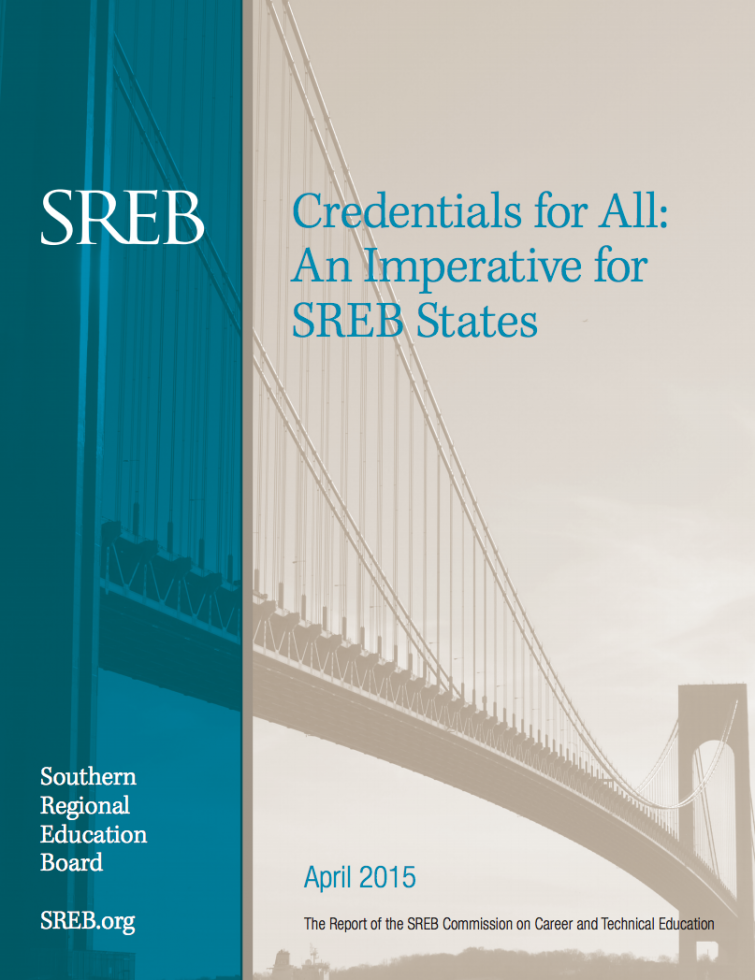CTE Commission
Commission on Career and Technical Education
How do we help more young people earn the postsecondary credentials and degrees that matter in today’s economy?
The SREB Commission on Career and Technical Education brought together legislators, educators and experts from across the United States to explore how to build career pathways that lead from high school to postsecondary education and training programs and good-paying jobs in high-demand fields.
The Commission’s report, Credentials for All: An Imperative for SREB States, offers states eight actions, supported by examples of policies and practices, that can help states reach this goal: Double the number of young adults who hold a relevant credential or degree by the age of 25.
Kentucky Governor Steve Beshear chaired the Commission, which began its work in December 2013 and published its final recommendations in April 2015.
8 Essential Actions for Building Relevant Career Pathways
Action 1
Build bridges from high school to postsecondary education and the workplace by creating rigorous, relevant career pathways driven by labor market demand. Elements of quality pathways:
- Combine a college-ready academic core with challenging technical studies and require students to complete real-world assignments.
- Align three stages of learning — secondary, postsecondary and the workplace — through strategies like dual enrollment and work-based learning.
- Create guidance systems that include career information, exploration and advisement and engage students in ongoing career and college counseling beginning in the middle grades.
- Allow students to choose accelerated learning options in settings that provide the extended time needed to earn advanced industry credentials.
- Lead to further education and training and high-skill, high-wage jobs in high-demand industries.
Action 2
Expect all students to graduate academically ready for both college and careers.
Action 3
Select assessments of technical and workplace readiness standards that offer long-term value to individual students, employers and the economy; carry college credits; and are directly linked to more advanced certifications and further study.
Action 4
Provide all high school career pathway teachers, especially new teachers from industry, with the professional development and fast-track induction programs they need to meet high academic, technical and pedagogical standards and enhance students’ academic and technical readiness for college and careers.
Action 5
Adopt a framework of strategies to restructure low-performing high schools around rigorous, relevant career pathways that accelerate learning and prepare students for postsecondary credentials and degrees.
Action 6
Offer early advanced credential programs in shared-time technology centers, aligning their curricula, instruction and technology with home high schools and community and technical colleges.
Action 7
Incentivize community and technical colleges and school districts to double the percentage of students who earn certificates, credentials and degrees by setting statewide readiness standards and aligning assessment and placement measures with those standards. Other strategies: Use the senior year of high school to reduce the number of students who need remediation, retool developmental education, adopt individualized support strategies for struggling students and improve postsecondary affordability.
Action 8
Design accountability systems that recognize and reward districts, high schools, technology centers, and community and technical colleges that double the number of young adults who acquire postsecondary credentials and secure high-skill, high-wage jobs by age 25.





